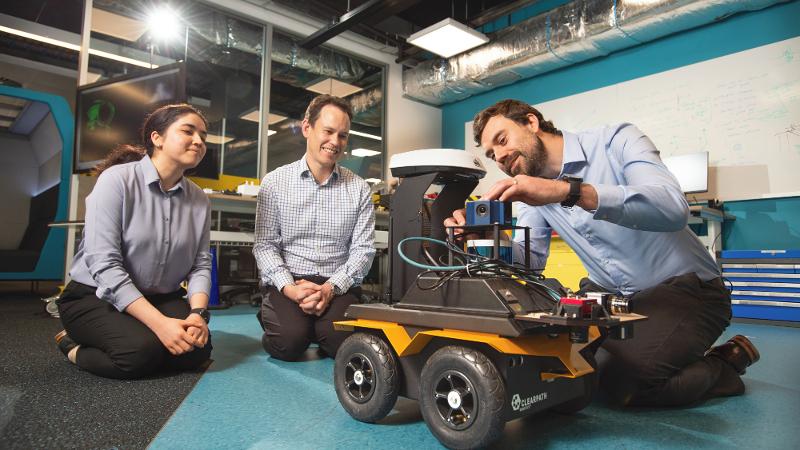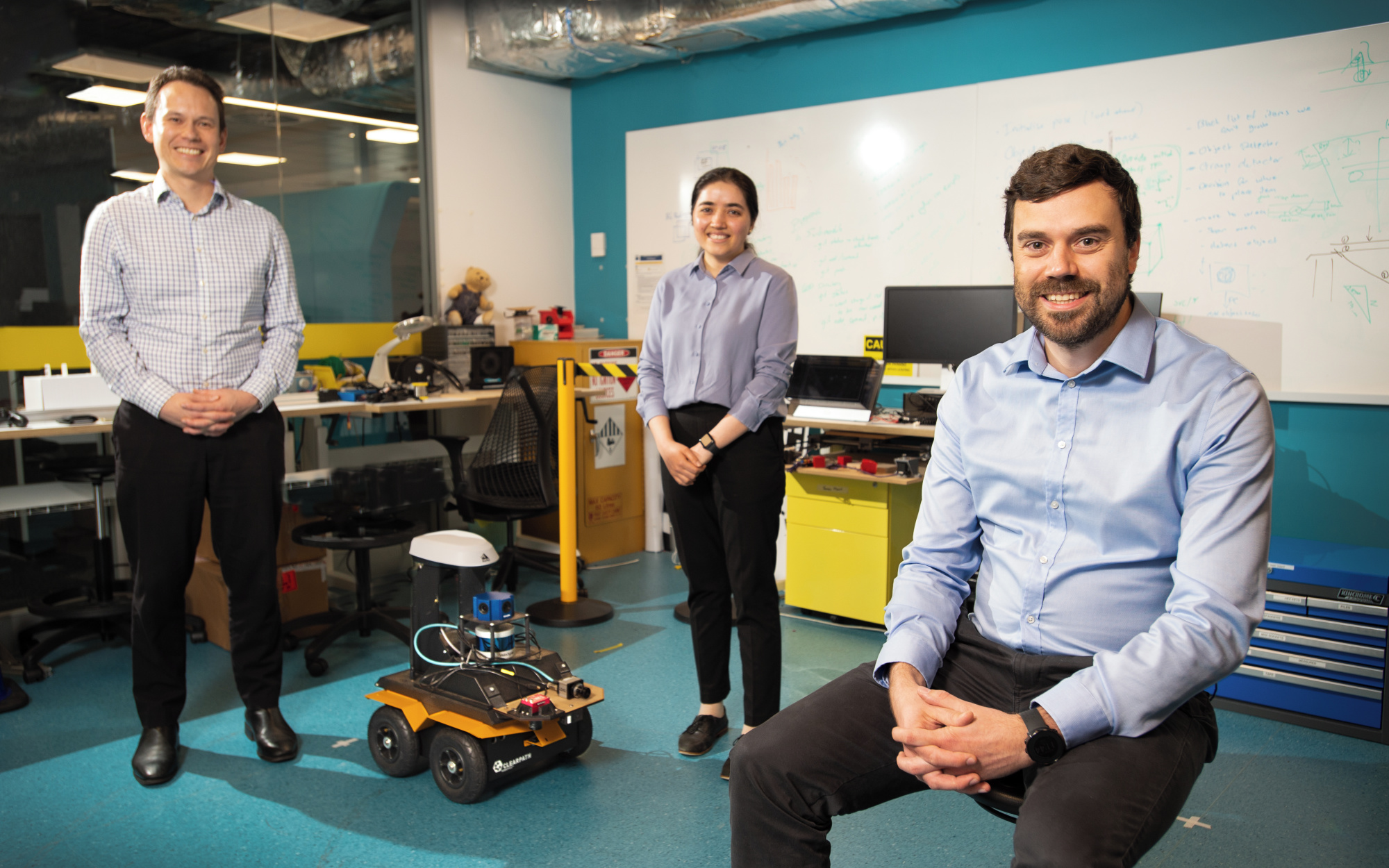
QUT has been selected by Intel Labs to conduct research using cutting-edge technology to boost the way robots see the world.
QUT Centre for Robotics researchers Dr Tobias Fischer, Professor Michael Milford, and PhD student Somayeh Hussaini, have received a grant from Intel’s Neuromorphic Computing Lab for their project which will use Intel’s Loihi 2 neuromorphic research chip.
Neuromorphic computing is based on the principles of biological neural computation and uses new algorithmic approaches that emulate how the human brain interacts with the world to deliver capabilities closer to human cognition.
The chip uses spiking neural networks (SNNs), which are novel computer models that closely resemble the neurons in our brains and simulate natural learning by dynamically re-mapping neural networks, to make decisions in response to learned patterns over time.
“Simultaneous Localization and Mapping (SLAM) algorithms are at the heart of autonomous mobile vehicles deployed in unknown, GPS-deprived, or dynamic environments,” Dr Fischer said.
“Our project will focus on Visual Place Recognition, a particularly challenging part of SLAM that requires robust recognition and discrimination of hundreds of thousands of locations in different conditions,” Dr Tobias Fischer said.
“This will include ‘slow’ adaptation (urban vs rural, or day vs night) as well as ‘fast’ adaptation (sudden onset of rain, entering tunnels). Continuous adaptation is very challenging as it is impossible to cover all environment variations in the training data,” he said.

QUT Centre of Robotics Joint Director Professor Michael Milford, said to overcome this challenge, the QUT research team from the School of Electrical Engineering & Robotics took inspiration from the animal kingdom.
“Many animals display remarkable navigation capabilities, solving large-scale memory formation and recognition problems with unprecedented efficiency, flexibility, and robustness,” Professor Michael Milford said.
“New features of Intel’s Loihi-2 enable more complex neuronal models, making it well-positioned to implement the next generation of biologically inspired navigation and map formation algorithms that could surpass today's state-of-the-art in the field.”
The QUT research project team has been closely collaborating with Intel including Dr Yulia Sandamirskaya, research scientist at Intel Labs, Dr Garrick Orchard, research scientist at Intel Labs, and Dr Andreas Wild, manager of software and algorithms at Intel Labs, to design algorithms.
“Neuromorphic computing opens exciting new possibilities in computing, especially when it comes to robotics,” said Mike Davies, director of Intel’s Neuromorphic Computing Lab.
“Loihi 2 greatly improves the speed, programmability and capacity of neuromorphic computing, which enables it to support more difficult optimization problems.
“We look forward to seeing how the QUT researchers utilize Loihi 2 to solve problems related to continuous adaptability and expand the scope of today’s robots. ”QUT and Intel Labs jointly organized the topic area, “From Neuroscience Theory to Robotic Applications,” at the prestigious three-week Telluride Neuromorphic Cognition Engineering Workshop in Colorado.
Media contact:
Pat Whyte, QUT Media, 07 3138 1150, patrick.whyte@qut.edu.au
After hours: 0407 585 901, media@qut.edu.au




